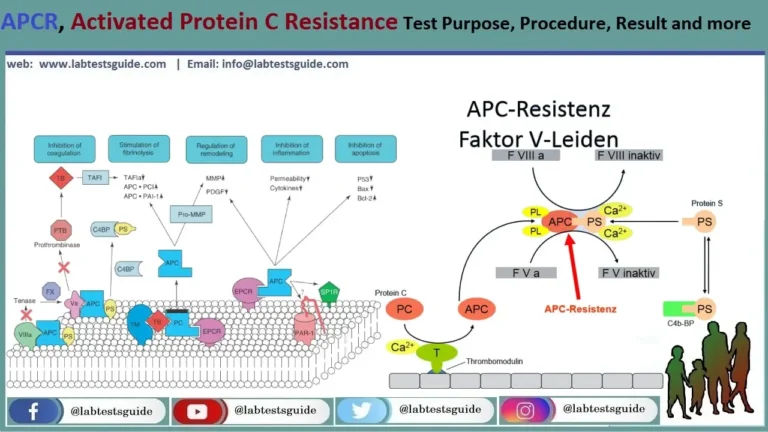DAT Test Purpose, Procedures, Results and more
The DAT Test (Direct Antiglobulin Test) is used to detect antibodies that add here to the surface of red blood cells. Many diseases and medications can cause this to happen. These antibodies sometimes destroy red blood cells and cause anemia. Your health care provider may recommend this test if you have signs or symptoms of anemia or jaundice (yellowing of the skin or eyes).

| Also Known as | Direct Coombs Test, Direct Antiglobulin Test, DAT, Direct Anti-human Globulin Test |
| Test Purpose | To examines red blood cells to see if they have antibodies attached to them. |
| Test Preparations | No Need any Preparations |
| Test Components | Coombs Test Direct |
| Specimen | Direct coombs: 3 ML (2 ML Min.) Whole Blood From 1 Lavender Top (EDTA) Tube. |
| Stability Room | Direct Coombs: 2 hours |
| Stability Refrigerated | Direct Coombs: 1 week |
| Stability Frozen | Direct Coombs: 2 weeks |
| Method | Erythrocyte Magnetised Technology |
| Download Report | Download Report |
Also Known As: DAT, Direct Coombs Test, Direct Anti-human Globulin Test
Types of Coombs Test:
There are two different types of Coombs tests
- Direct Coombs Test:
The direct Coombs test (sometimes called the direct antiglobulin test) examines red blood cells to see if they have antibodies attached to them. It is often used to diagnose blood-related conditions, such as autoimmune hemolytic anemia. People with autoimmune hemolytic anemia don’t have enough red blood cells because their bodies destroy them too soon. - Indirect Coombs Test:
The indirect Coombs test tells your provider if there are antibodies present in your bloodstream that could attach to red blood cells. It is used as a screening process to see how you will react to a blood transfusion. An indirect Coombs test is also routinely done as part of prenatal testing.
Purpose Of The Test (Indications):
- To diagnose the hemolytic anemia of the newborn.
- This test is done on the cells (RBC) especially in the case of a newborn in the Rh-negative mother when the baby is Rh-positive and in case of erythroblastosis fetalis.
- T0 diagnose autoimmune hemolytic anemias.
- To diagnose blood transfusion reactions.
- To diagnose drug-induced hemolytic anemia.
Why Get Tested?
To help diagnose the cause of red blood cells destruction (hemolytic anemia); to investigate a blood transfusion reaction; to diagnose hemolytic disease of the newborn
When To Get Tested?
- When you have had a blood transfusion recently and are experiencing symptoms of a transfusion reaction, such as dizziness, back pain, dark urine, shortness of breath
- When a newborn shows signs of hemolytic disease of the newborn
- When you have symptoms of increased destruction of your red blood cells, which may include feeling tired more often than usual, shortness of breath, headaches, paleness and your healthcare practitioner wants to find out if this happens because your immune system mistakenly makes antibodies that destroy your red blood cells
Sample Required:
- The blood is collected in EDTA.
- Separate RBC immediately to prevent absorption of the complement to RBC.
- Avoid clotted blood if possible. In the case of clotted blood, keep the blood at room temp. 37 °C, until the cells are separated.
- Can store sample at 4 °C for one week.
Coombs Test Result Mean
| Result | Direct Coombs Test | Indirect Coombs Test |
|---|---|---|
| Negative result | Antibodies not attached to Red Blood Cells | Antibodies not loose in Serum |
| Positive result | Antibodies attached to Red Blood Cells | Antibodies loose in Serum |
Direct Coombs Test Results
- It is normally negative, there is no agglutination.
- Positive direct Coombs shows agglutination immediately after centrifugation indicating that RBCs are coated with antibodies.
- This test is read positive when the clumping on a scale of a trace to +4.
- False-positive results are seen in:
- Insufficient washing of the RBCs.
- Over Centrifugation of the test.
- Contaminated reagents.
- If the washed RBCs left for a longer period of time.
The Positive Test Is Seen In:
- Autoimmune hemolytic anemia.
- Warm reactive autoantibody.
- Cold reactive autoantibody.
- Cold haemagglutinin disease is seen in Lymphoma, pneumonia.
- Paroxysmal cold hemoglobinuria.
- Systemic lupus erythematosus.
- Drug-induced hemolytic anemia e.g penicillin, quinidine, Cephalosporin, and α-methyldopa.
- Hemolytic anemia: Transfusion reaction to incompatible RBC and hemolytic anemia of the newborn.
- Erythroblastosis fetalis.
- Incompatible blood transfusion.
- Malignant diseases:
- Lymphoma.
- Chronic lymphocytic leukemia.
- Infections :
- Infectious mononucleosis.
- Mycoplasma pneumoniae.
Home | Blog | About Us | Contact Us | Disclaimer
Possible References Used





